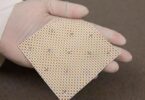[et_pb_section bb_built=”1″][et_pb_row][et_pb_column type=”1_2″][et_pb_text _builder_version=”3.13.1″]
Classifying the different types of mental illness is a very complicated activity that requires a deep research task.
Throughout history various associations and groups of experts have tried to classify them, with more or less acceptance on the part of the scientific community. These categories allow to organize the theoretical knowledge in a more easily understandable way, although there could be a risk of ignoring or separating specific aspects that could be closely related.
According to an article published in ScienceDaily, a new diagnostic technique developed by a researcher at Monash University could greatly accelerate the detection of mental and neurological diseases.
The researcher has innovated the electrovestibulography, something similar to an ‘Electrocardiogram of the mind’. The patterns of electrical activity in the vestibular system of the brain are measured against different response patterns observed in depression, schizophrenia and other disorders of the central nervous system.
The Vestibular System is contained within the inner ear and consists of: – Vestibule: Inside the vestibule there are two structures, Utricle and Sáculo. In the utricle and saccule there is a receptor organ called Macula, which is composed of ciliated sensory receptor cells.
The vestibular system is the portion of the inner ear that regulates functions such as balance and orientation in space. When a person suffers from a pathology in the inner ear, they may experience a wide variety of problems such as vertigo, hearing loss and nausea.
The vestibular system is closely related to the original regions of the brain that relate emotions and behavior, so the researcher saw the diagnostic potential of measuring and comparing different patterns of electrovestibular activity.
[/et_pb_text][/et_pb_column][et_pb_column type=”1_2″][et_pb_text _builder_version=”3.13.1″]
Working with psychiatric researchers at the Alfred Psychiatry Research Center of Monash University (MAPrc) in Melbourne, Australia, he tested with volunteers and observed different response patterns or “biomarkers”, which distinguished different diseases of the Centarl Nervous System from each other and from the activity Normal electrovestibular.
There has been an association to develop and patent electrovestibulography or EVestG ™. It is expected that this process of simple, fast and cheap detection for diseases of the Nervous System.
According to the CEO of Neural Diagnostics, Dr. Roger Edwards, the implications of the new technique are enormous: “It could be one of the most significant inventions that ever come from Monash. The disorders of the Central Nervous System cost more than 2 billion dollars worldwide and affect one person in four at some time in their life. Currently, the diagnosis of these diseases is made almost exclusively by qualitative measures, through questions and interviews, and it can take years to diagnose them correctly, “said Dr. Edwards.
The new technique is gaining interest internationally and, if the next tests are adjusted to what was planned, it could be incorporated into Australian and other countries’ hospitals very soon.
These and other innovations are also possible in Pharmamedic.

[/et_pb_text][/et_pb_column][/et_pb_row][/et_pb_section]









